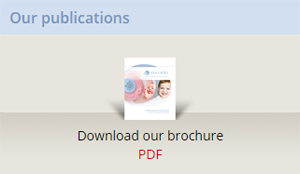Vitrification- Oocyte cryopreservation
Until recently, oocyte cryopreservation remained a challenge in human IVF, as the low survival and fertilization rates of cryopreserved oocytes led to low pregnancy rates. Recently however, the method of vitrification has revolutionized oocyte freezing and it is associated with high rates of oocyte survival, fertilization, embryo quality and pregnancy rates. The method can be applied on fertilized oocytes, cleavage stage embryos and blastocysts.
Vitrification is a method of ultra-rapid freezing. The oocytes are placed in special cryoprotectant solutions and are then plunged directly in liquid nitrogen, where they are stored until future use. Through this technique, the interior of the oocytes reverts to a form of glass, avoiding the formation of ice crystals that are detrimental to oocyte viability.
Numerous studies have been conducted on the success rates and safety of this technique and all report encouraging results regarding the health of children born following the method.
Applications of vitrification
Oocyte cryopreservation is performed during an IVF cycle following ovarian stimulation. It is a method for storing genetic material for women who wish to postpone having a child until later in life, as well as in cases of premature ovarian failure, lack of spermatozoa in the male partner’s semen sample (azoospermia) or following an unsuccessful testicular biopsy on the day of oocyte retrieval.
The experience of Eugonia
In Eugonia, we use vitrification for oocyte and embryo cryopreservation, following the international scientific developments, informing the patients about the method's advantages and disadvantages and we have several successful pregnancies and live births following the use of this technique.






























